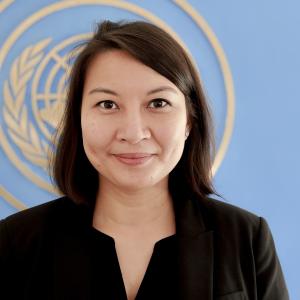Despite impressive treatment results, Cambodia’s HIV response must address inequalities affecting children and young key populations
05 April 2023
PHNOM PENH, April 5, 2023—Today National AIDS Authority, Ministry of Health- National Center For HIV/AIDS, Dermatology and STDs (NCHADS), and UNAIDS Multi-country Office of Cambodia, Lao PDR and Malaysia, based in Phnom Penh, jointly disseminated Cambodia’s latest HIV estimates. The 2023 HIV estimates point to Cambodia’s continued commendable treatment services and results. However, targeted efforts and investments are required to reduce new infections among men, eliminate mother-to-child transmission and reach children living with HIV with services.
“Cambodia has made strong progress toward ending the AIDS epidemic, but inequalities are still stalling progress. These updated HIV estimates equip us to better understand the impact that gender and age-related inequalities, inequalities faced by key populations, and inequalities between children and adults have had on the national HIV response,” said Senior Minister and Chair of National AIDS Authority, Excellency Ieng Mouly.
By the end of 2022, estimated 76 000 (63 000-85 000) people were living with HIV (PLHIV) and of which 74 000 (61 000 – 83 000) were adults 15 years and older and about 2000 (1600-2400) were children (0-14 years). 86% of all PLHIV knew their HIV status and estimated 11 000 people did not know that they were living with HIV.
Cambodia’s achievements in attaining the highest linkage to treatment services with high level of viral suppression rate among PLHIV are exemplary. As of December 2022, 64 931 PLHIV were accessing antiretroviral therapy and it translates to 99% of PLHIV who knew their status were accessing treatment, and 98% of PLHIV on treatment were virally suppressed.
“A clear strength of the Cambodian HIV response is its ability to link people to treatment services once they have been diagnosed, retain them on treatment and maximise the benefits of having people with an undetectable viral load who then are not able to transmit HIV. Now we must work to reach those not accessing testing services by scaling up approaches such as community-based testing and self-testing,” said NCHADS Director, Dr. Ouk Vichea.
It is estimated that there were 1400 (1200-1500) new HIV infections in 2022, which translates to about four people become infected with HIV every day. New HIV infections have been reduced by 91% since the peak of the HIV epidemic in 1996 but the pace of decline has been slowing down and only 33% reduction as compared to 2010. New HIV estimates indicated that increasing proportion of new HIV infections are among men and boys; they accounted for 79% all new HIV infections in 2022. By population, 83% to total new HIV infections are among key populations (female entertainment workers, gay men and other men who have sex with men, transgender women, people who use and inject drugs) and their sexual partners.
“While HIV infections have decreased significantly among women, they are increasing among men, and particularly young gay men,” said Patricia Ongpin, Director of UNAIDS Cambodia, Lao PDR, and Malaysia office. “To bend the curve of new HIV infections, we need focused interventions to increase HIV knowledge as well as access to prevention and testing services for young key populations. We need to explore new ways of working to provide HIV related services to those not yet reached.”
Two critical concerns are the ongoing cases of HIV transmission to babies as well as the low service access for children living with HIV. One of ten pregnant women living with HIV did not access prevention of mother-to-child treatment services last year. The country’s transmission rate from mothers to children remains high at almost ten percent (9.9%). Additionally, just 59% of children living with HIV have been diagnosed and were on treatment in 2022.
“The latest data tell us we must prioritize elimination of mother-to-child HIV transmission urgently while working to ensure that the children who are infected are not left behind,” Ms. Ongpin said.
The Cambodian Policy to Eliminate AIDS includes a raft of measures including increased national investments, deepened community engagement, international cooperation to close prevention gaps and increasing access to social security and healthcare for vulnerable people. The new HIV data will help finetune these approaches, ensuring resources and services are tailored and targeted to those who need them most.
Contact
H.E. Dr. Chhim Khindareth, Secretary General of NAA, Mobile phone: 085 836 767, Email: khindareth@naaa.gov.kh
Dr. OUK Vichea, Director of NCHADS, Mobile phone: 012 51 24 25, Email: oukvichea@nchads.org
Patricia Ongpin | OngpinP@unaids.org | UNAIDS Multi-country Office for Cambodia, Lao PDR, and Malaysia | tel. + 855 2321 9340 | unaids-ap.org | unaids.org




